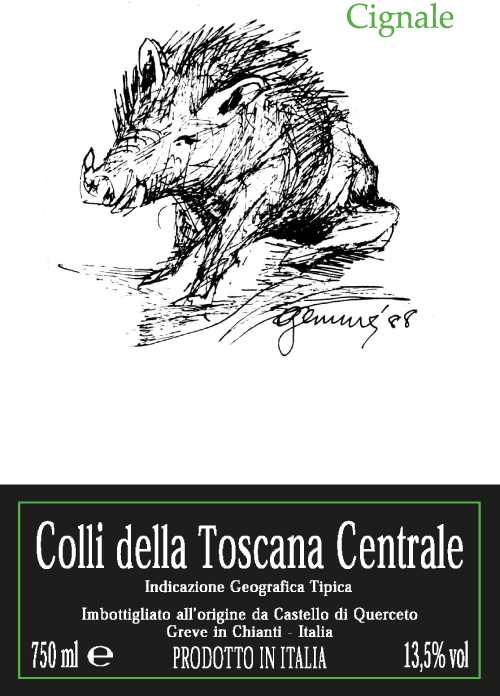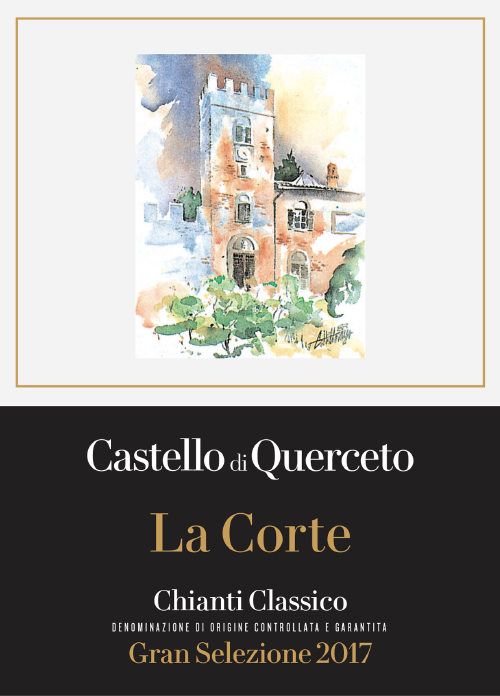The produce
of Castello di Querceto
Learn more about the area
Find out why our wines are so fabulous!
The produce
of Castello di Querceto
Learn more about the area
Find out why our wines are so fabulous!

Our wines and other products
Learn more

Vineyards and olive groves
Learn more

Our cellars and premises
Learn more

The old wine cellars
Learn more

Castello di Querceto Chianti Classico
Chianti Classico

Castello di Querceto Chianti Classico Riseva
Chianti Classico

Il Picchio Chianti Classico Gran Selezione
Chianti Classico
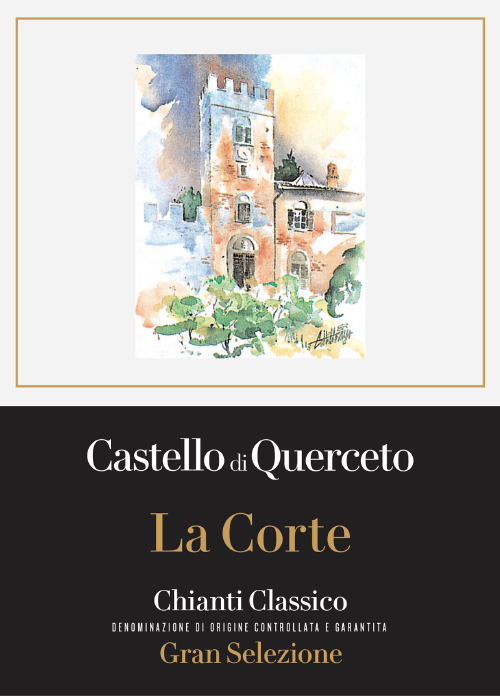
La Corte Chianti Classico Gran Selezione
Chianti Classico

Il Querciolaia Igt Colli Toscana Centrale
Crus

Cignale Igt Colli Toscana Centrale
Crus

Il Sole di Alessandro Igt Colli Toscana Centrale
Crus
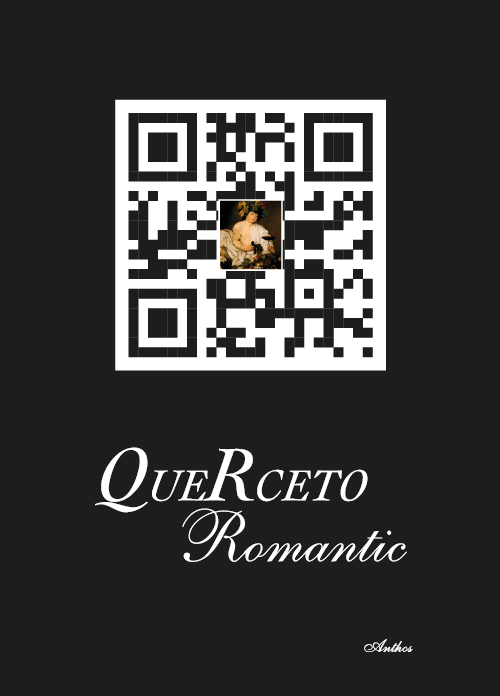
Querceto Romantic Igt Colli Toscana Centrale
Crus

Chianti Classico Querceto
Altri vini

Chianti Querceto
Altri vini

Igt Toscana Sangiovese Querceto
Altri vini

Vernaccia di San Gimignano Querceto
Altri vini

Igt Toscana Tuscan Red Querceto
Altri vini

Castello di Querceto Vin Santo del Chianti Classico
Vin santo

François 1°
Spumanti
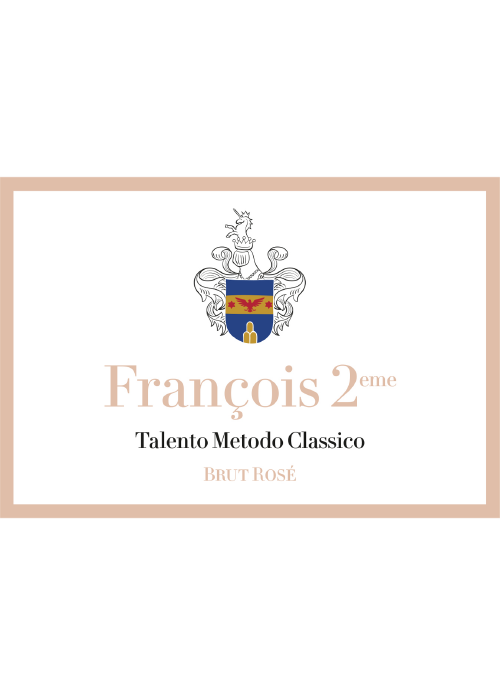
François 2°
Spumanti
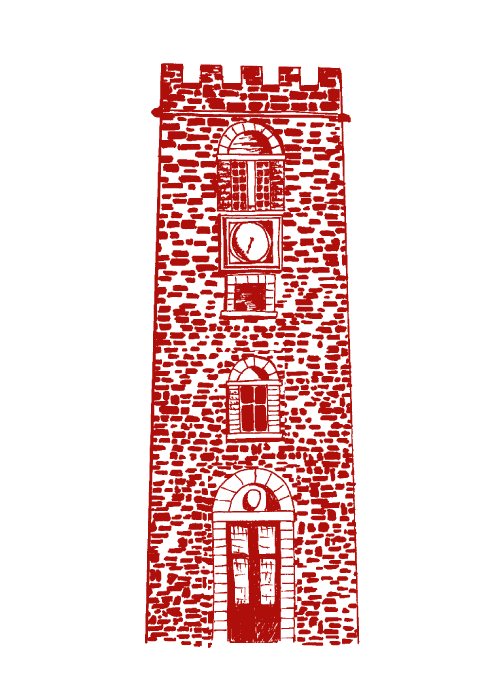
L’Acquavite del Castello
Distillati

L’Acquavite del Castello Riserva
Distillati

L’Arzente del Castello
Distillati

Castello di Querceto Olio Extravergine di Oliva
Olio
Vineyards and olive groves
I vigneti si trovano ad un’altitudine compresa tra i 350 e i 520 m. s.l.m. e le esposizioni variano in un arco che da est va a sud e poi ad ovest. I vitigni presenti sono a larga maggioranza a bacca rossa, tra i quali primeggia, ovviamente, il Sangiovese, affiancato da Canaiolo, Colorino, Cabernet Sauvignon, Petit Verdot, Syrah, Merlot ed altre varietà autoctone. A bacca bianca troviamo la Malvasia del Chianti, il Trebbiano Toscano, il San Colombano e lo Chardonnay.
Un’eterogeneità di uve dettata dalla volontà di interpretare le caratteristiche del suolo, della sua esposizione e della sua altitudine.
Le forme di allevamento utilizzate sono quelle tradizionali per il territorio del Chianti Classico, ovvero il cordone speronato ed il guyot. La densità varia da 3.330 a 6.500 piante ad ettaro.
Gli oliveti sono suddivisi in diversi appezzamenti e le varietà presenti sono le tradizionali del territorio, ovvero Frantoio, Moraiolo, Leccino, Pendolino e Maurino.
Our cellars and premises
Nel cuore dell’azienda, vicino al Castello, è concentrata l’intera struttura produttiva.
Dai magazzini alla sala di imbottigliamento fino ad arrivare alle quattro cantine nelle quali si svolgono le varie fasi del processo produttivo del vino: fermentazione e prime lavorazioni, stoccaggio ed invecchiamento.
Ulteriori locali sono destinati alla produzione e all’invecchiamento del Vin Santo e alla produzione dell’olio extra vergine di oliva.
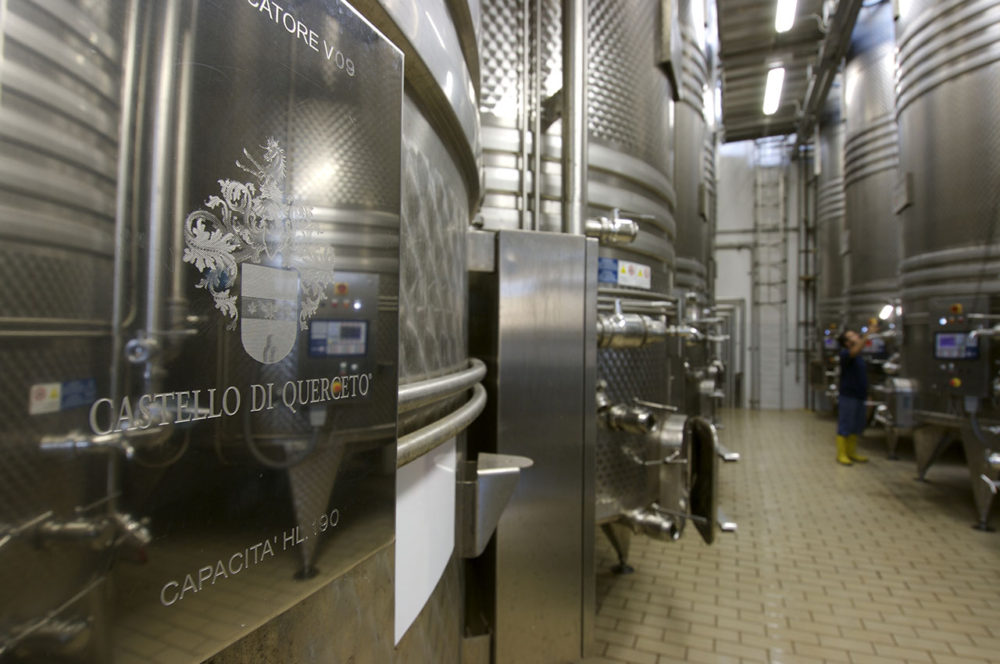
La cantina di fermentazione
Il reparto di fermentazione alcolica è caratterizzato da un sistema di controllo automatico e computerizzato coinvolto in tutte le fasi del processo e contraddistinto da una grande flessibilità che consente l’utilizzazione di numerosi diversi programmi operativi.
Il reparto è dotato di una pressa pneumatica per le vinacce, che subiscono una soffice pressatura prima di essere inviate alla distillazione.
La cantina di stoccaggio, climatizzata, è costituita da serbatoi di acciaio inox e di cemento vetrificato.

L’imbottigliamento
Il reparto imbottigliamento e confezionamento è costituito da un impianto automatico avente una capacità di circa 4.000 bottiglie/ora.
Nella zona di stoccaggio, in un altro locale opportunamente climatizzato, vengono conservate le bottiglie prima di essere immesse in commercio, per un periodo di affinamento, variabile a seconda della diversa tipologia del prodotto. L’ultimo momento di riposo prima di incontrare la curiosità di tanti appassionati e consumatori.
Tutto il processo produttivo è certificato secondo gli standards internazionali alimentari BRC e IFS, che vengono rinnovati annualmente.
The old wine cellars
Le cantine di invecchiamento si trovano nel sottosuolo del Castello e nel sotterraneo di uno degli edifici di recente costruzione.
Al loro interno barriques e tonneaux di Allier, Tronçais e Limousin, insieme a piccole botti di rovere di capacità comprese tra 10 e 40 Hl., sono utilizzati per la maturazione dei Crus del Castello e dei Chianti Classico Gran Selezione e Riserva.
Visitando oggi la vecchia cantina, inebriati dai profumi dei vini che maturano in pregiati fusti di rovere, ci si addentra fino al cuore del Castello, dove sono custodite le selezioni delle migliori annate a partire dal 1904.

